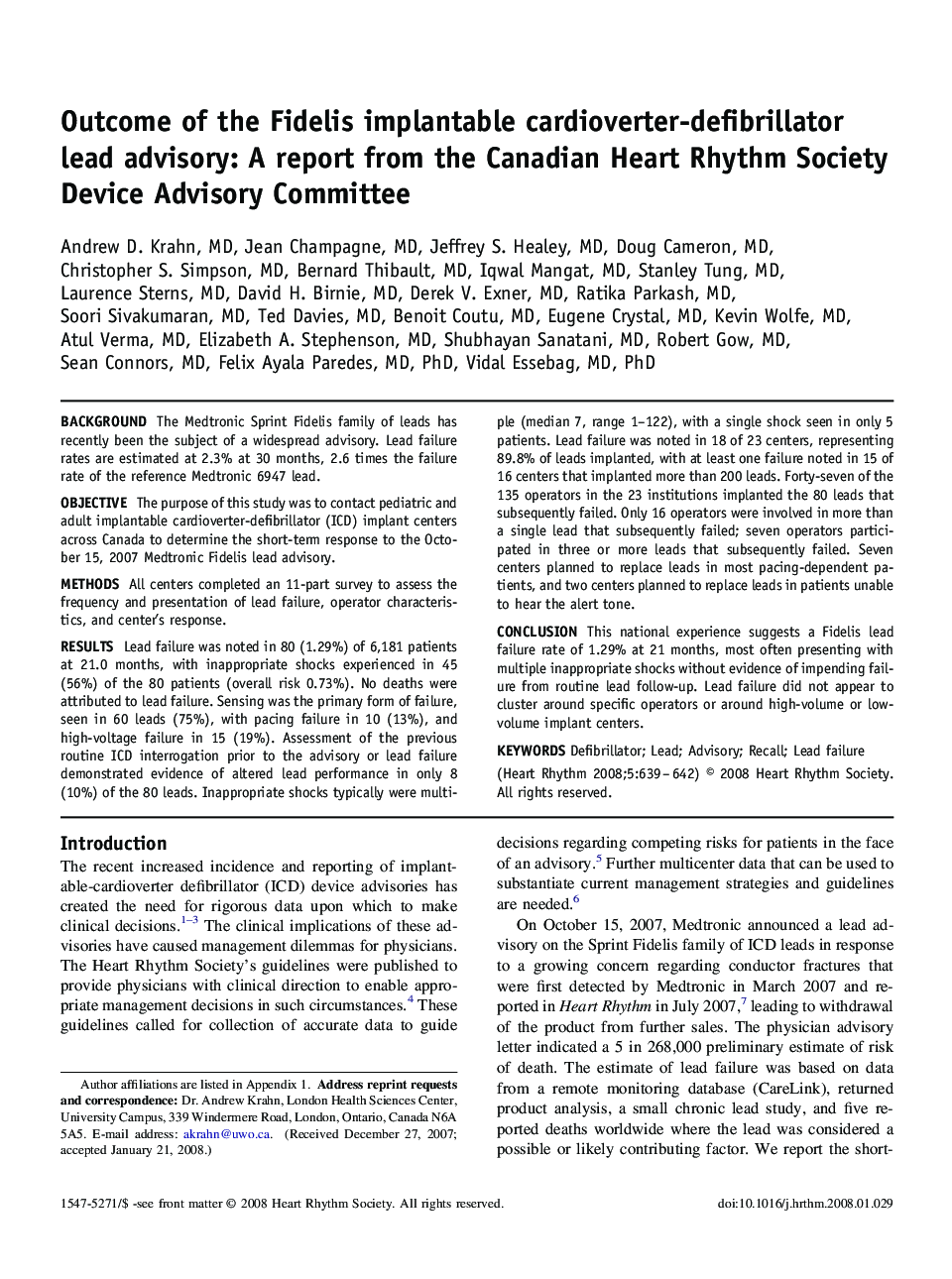| کد مقاله | کد نشریه | سال انتشار | مقاله انگلیسی | نسخه تمام متن |
|---|---|---|---|---|
| 2923863 | 1175888 | 2008 | 4 صفحه PDF | دانلود رایگان |

BackgroundThe Medtronic Sprint Fidelis family of leads has recently been the subject of a widespread advisory. Lead failure rates are estimated at 2.3% at 30 months, 2.6 times the failure rate of the reference Medtronic 6947 lead.ObjectiveThe purpose of this study was to contact pediatric and adult implantable cardioverter-defibrillator (ICD) implant centers across Canada to determine the short-term response to the October 15, 2007 Medtronic Fidelis lead advisory.MethodsAll centers completed an 11-part survey to assess the frequency and presentation of lead failure, operator characteristics, and center's response.ResultsLead failure was noted in 80 (1.29%) of 6,181 patients at 21.0 months, with inappropriate shocks experienced in 45 (56%) of the 80 patients (overall risk 0.73%). No deaths were attributed to lead failure. Sensing was the primary form of failure, seen in 60 leads (75%), with pacing failure in 10 (13%), and high-voltage failure in 15 (19%). Assessment of the previous routine ICD interrogation prior to the advisory or lead failure demonstrated evidence of altered lead performance in only 8 (10%) of the 80 leads. Inappropriate shocks typically were multiple (median 7, range 1–122), with a single shock seen in only 5 patients. Lead failure was noted in 18 of 23 centers, representing 89.8% of leads implanted, with at least one failure noted in 15 of 16 centers that implanted more than 200 leads. Forty-seven of the 135 operators in the 23 institutions implanted the 80 leads that subsequently failed. Only 16 operators were involved in more than a single lead that subsequently failed; seven operators participated in three or more leads that subsequently failed. Seven centers planned to replace leads in most pacing-dependent patients, and two centers planned to replace leads in patients unable to hear the alert tone.ConclusionThis national experience suggests a Fidelis lead failure rate of 1.29% at 21 months, most often presenting with multiple inappropriate shocks without evidence of impending failure from routine lead follow-up. Lead failure did not appear to cluster around specific operators or around high-volume or low-volume implant centers.
Journal: Heart Rhythm - Volume 5, Issue 5, May 2008, Pages 639–642